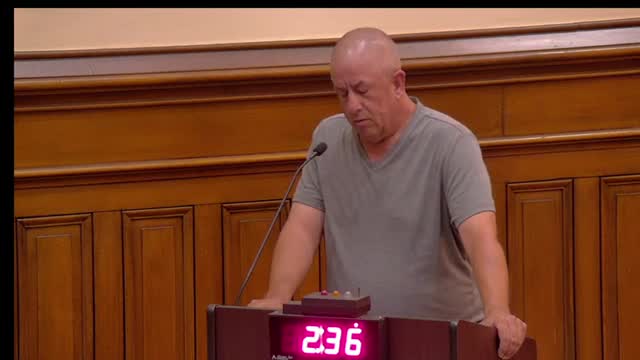Scranton faces backlash over steep sewer rate hikes
July 31, 2024 | Scranton, Lackawanna County, Pennsylvania

This article was created by AI summarizing key points discussed. AI makes mistakes, so for full details and context, please refer to the video of the full meeting. Please report any errors so we can fix them. Report an error »

In a recent Scranton government meeting, significant concerns were raised regarding the impending $220 annual increase in sewer bills for residents, attributed to the sale of the Scranton Sewer Authority. This increase, which represents a 6.4% hike, has sparked frustration among city officials and residents alike, with calls for a reevaluation of the financial implications of the sale, which reportedly netted the city $83 million.
City officials expressed dissatisfaction with the current state of infrastructure maintenance, particularly regarding pave cuts made by contractors. There were suggestions to enforce existing ordinances more strictly, as many contractors are failing to properly seal these cuts, leading to recurring repair costs. The need for budget adjustments to address blight and pave cut inspections was emphasized, with officials arguing that proactive measures would be more cost-effective than ongoing repairs.
The meeting also touched on public safety issues, including the Scranton Police Department's staffing challenges. Despite a high number of applicants for police positions, only ten candidates remain, raising concerns about the city's ability to retain local talent. Additionally, the discussion highlighted the lack of support for the homeless population, with officials criticizing the city’s approach to providing assistance.
Another contentious topic was the perceived disparity in treatment between emergency services. An arbitrator's decision allowed police officers to live outside the city, while fire department personnel are required to reside within city limits. This inconsistency has led to accusations of discriminatory treatment among city emergency workers.
As the city grapples with these pressing issues, officials are calling for a more equitable approach to governance and infrastructure management, urging for immediate action to address the financial burdens on residents and the operational challenges faced by city services.
City officials expressed dissatisfaction with the current state of infrastructure maintenance, particularly regarding pave cuts made by contractors. There were suggestions to enforce existing ordinances more strictly, as many contractors are failing to properly seal these cuts, leading to recurring repair costs. The need for budget adjustments to address blight and pave cut inspections was emphasized, with officials arguing that proactive measures would be more cost-effective than ongoing repairs.
The meeting also touched on public safety issues, including the Scranton Police Department's staffing challenges. Despite a high number of applicants for police positions, only ten candidates remain, raising concerns about the city's ability to retain local talent. Additionally, the discussion highlighted the lack of support for the homeless population, with officials criticizing the city’s approach to providing assistance.
Another contentious topic was the perceived disparity in treatment between emergency services. An arbitrator's decision allowed police officers to live outside the city, while fire department personnel are required to reside within city limits. This inconsistency has led to accusations of discriminatory treatment among city emergency workers.
As the city grapples with these pressing issues, officials are calling for a more equitable approach to governance and infrastructure management, urging for immediate action to address the financial burdens on residents and the operational challenges faced by city services.
View full meeting
This article is based on a recent meeting—watch the full video and explore the complete transcript for deeper insights into the discussion.
View full meeting